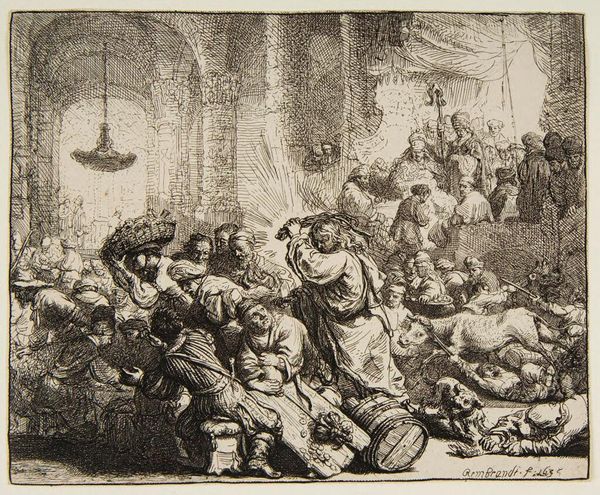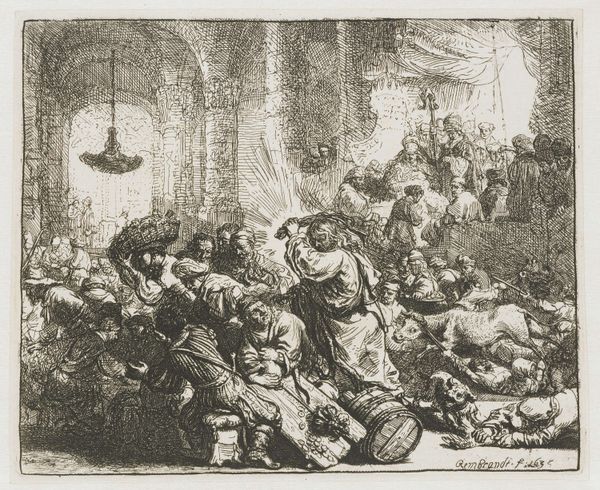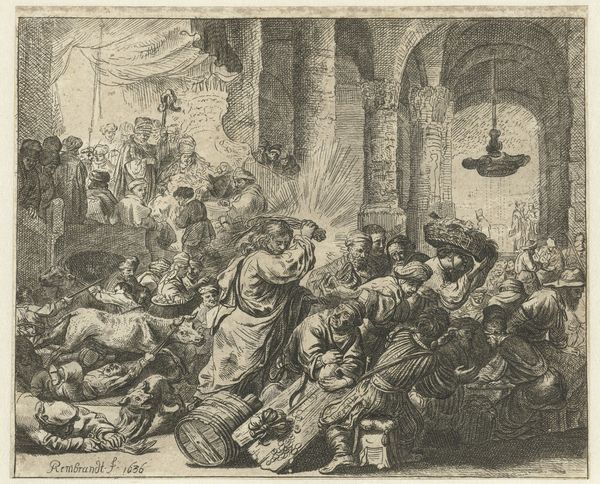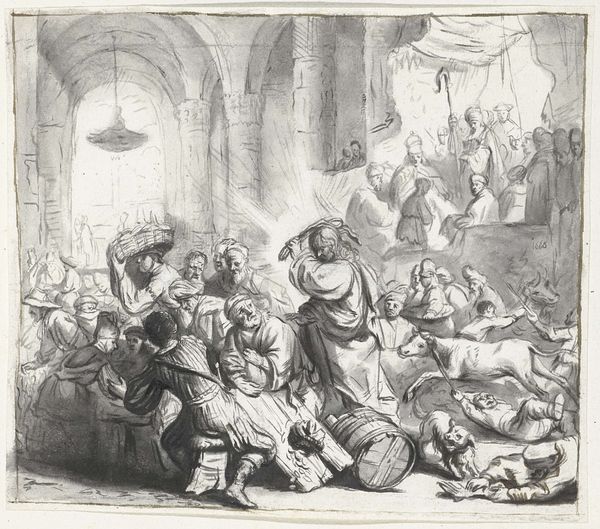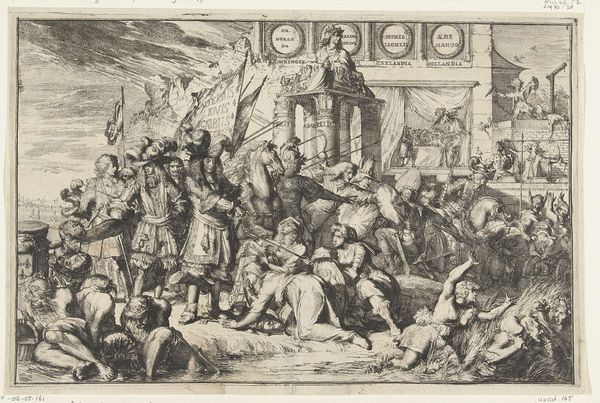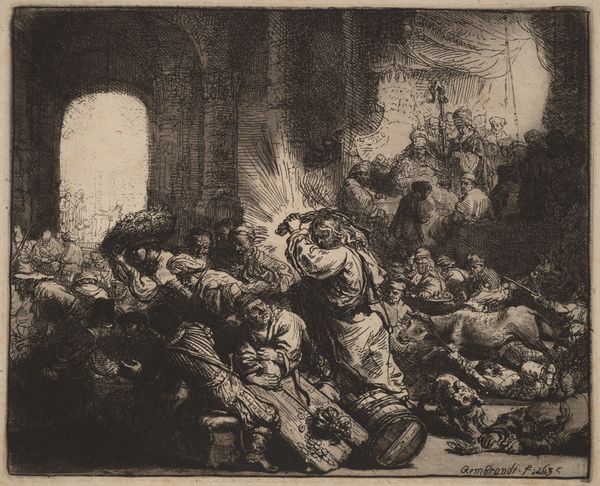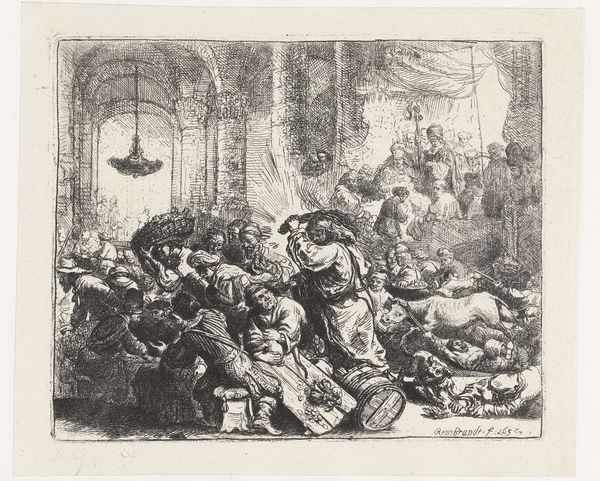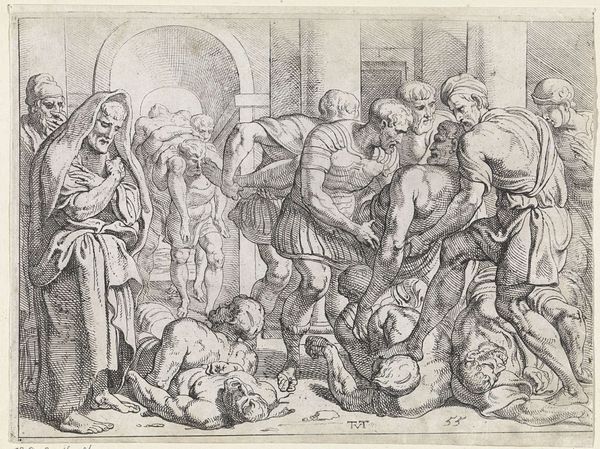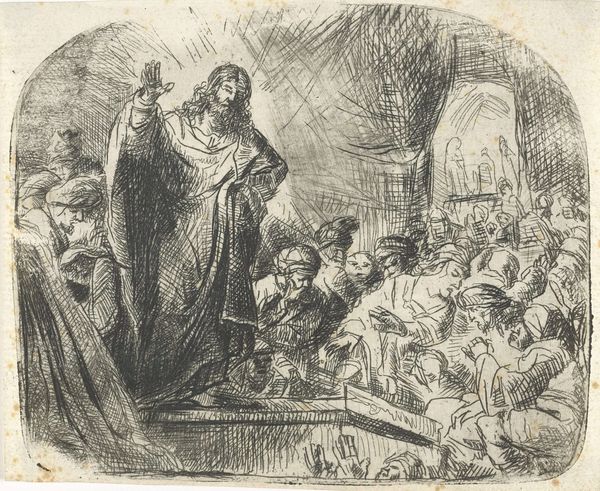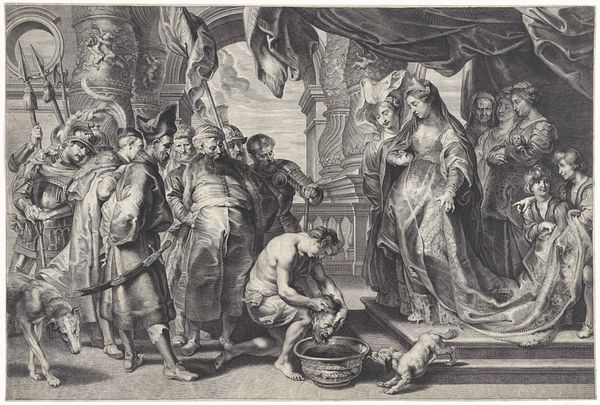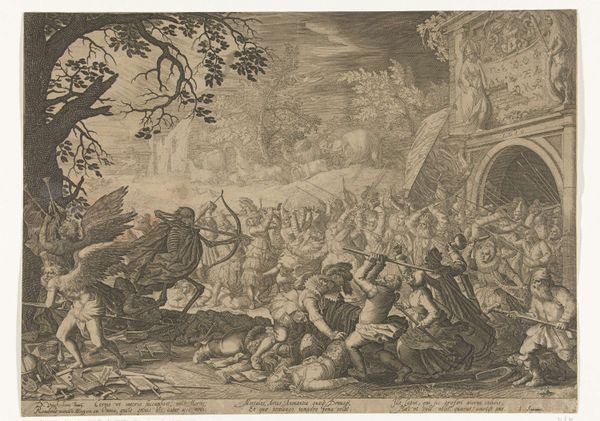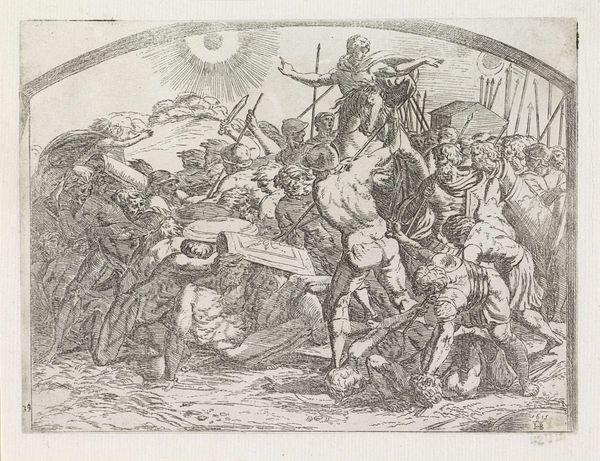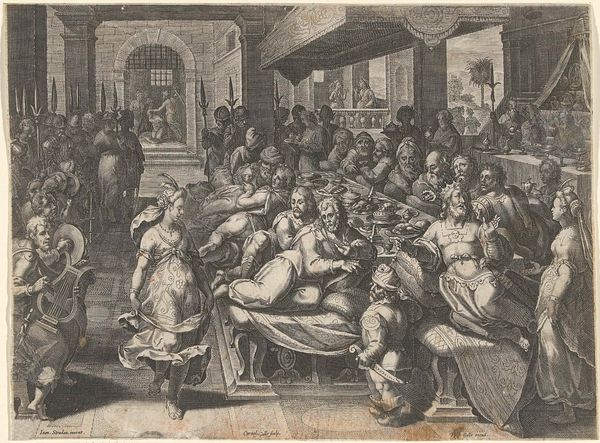
drawing, print, etching, oil-paint, charcoal
#
drawing
#
narrative-art
#
baroque
# print
#
etching
#
oil-paint
#
charcoal drawing
#
figuration
#
charcoal
#
history-painting
#
charcoal
Copyright: Public Domain: Artvee
Curator: This is Rembrandt van Rijn's etching, "Christ Driving the Moneychangers from the Temple," created in 1635. It's a dramatic depiction of a scene from the New Testament. Editor: My initial impression is chaotic energy. There’s a whirlwind of figures, animals, and scattered objects – a stark contrast between light and shadow intensifying the drama. Curator: Absolutely. The composition pulls you right into the heart of the temple. Consider the historical context: in the 17th century, Dutch artists frequently depicted biblical scenes. Rembrandt brings a distinctly human element to this sacred narrative. His portrayal underscores a potent criticism against institutional corruption. Editor: I'm struck by the class dynamics at play. We see Christ, positioned almost centrally but also isolated in his moral righteousness, challenging established religious authorities and disrupting the economic activities that exploited ordinary worshippers. It becomes a statement about dismantling systemic oppression. Curator: It's an incredible rendering of social critique. Rembrandt used etching to his advantage here. Observe the dynamic lines – notice how they add texture and movement to every single figure, almost blurring the sense of perspective, heightening the sense of pandemonium. The central figure of Christ stands out, with dramatic lighting emphasizing the righteous fury. Editor: Yes, the light is very intentional. In my opinion, the expressive faces contribute to the depth of this work. Look closely and we see varied reactions: fear, defiance, confusion. Each person responds to Christ's intervention in unique ways. We get to consider their moral positions and allegiances. Curator: And it reflects contemporary anxieties about commerce and religious piety at the time, speaking to concerns around the monetization of sacred spaces. Editor: Exactly, which is precisely what gives the piece continued resonance today, calling into question similar intersections of power and corruption in various forms of authority. I leave with much to contemplate. Curator: I agree, it makes one consider the visual power in the act of rebellion. Thank you.
Comments
No comments
Be the first to comment and join the conversation on the ultimate creative platform.
